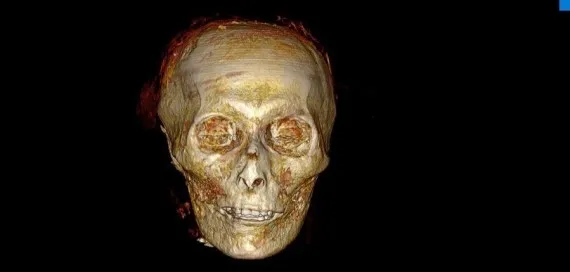Is the Tomb of Pharaoh Amenhotep III Now Open to Visitors?

Synopsis
Key Takeaways
- Amenhotep III ruled over 3500 years ago.
- The tomb is located in the Valley of the Kings.
- Restoration efforts spanned over 20 years.
- It features rich wall paintings and decorations.
- The tomb reflects the cultural prosperity of the New Kingdom.
Luxor (Egypt), Oct 4 (NationPress) The Ministry of Tourism and Antiquities of Egypt has officially opened the tomb of Amenhotep III, a New Kingdom Pharaoh, to the public after an extensive restoration that lasted over 20 years. This remarkable site is located in the Valley of the Kings, on the western side of the renowned necropolis. The tomb, which dates back over 3500 years, was first unearthed in 1799 but suffered looting, including the theft of its sarcophagus.
Mohamed Ismail Khaled, the Secretary-General of Egypt's Supreme Council of Antiquities, stated that this tomb is considered one of the most significant in the Valley of the Kings and emphasized how its reopening is a great enhancement to Egypt's cultural tourism.
The restoration was a collaborative effort involving experts from Egypt, Italy, and Japan, focusing on the preservation of the tomb's exquisite wall paintings. The conservation work unfolded in three stages: 2001-2004, 2010-2012, and finally from 2023 to 2024. Khaled noted that the tomb's intricate designs and vivid artwork epitomize the artistic and cultural richness of the New Kingdom.
“This tomb is celebrated for its distinctive decorations and colorful inscriptions that portray religious and symbolic scenes of the king's journey into the afterlife,” he added, according to the Xinhua news agency.
Amenhotep III became Pharaoh as a teen, following his father Thutmose IV's death. His nearly 40-year reign is often referred to as a golden era of peace and prosperity, with most activities centered in Thebes instead of the traditional capital of Memphis.
During the 21st Dynasty, his mummy was moved, along with other royal remains, to the Royal Mummies Cache, later found in the tomb of Amenhotep II in 1898. Today, his remains are preserved at the National Museum of Egyptian Civilization in Cairo.









